The New Critters!
You can print this page out and use it to help create your data matrix.
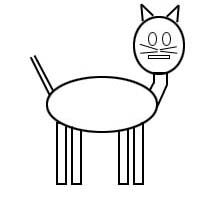
Critter's name: A | 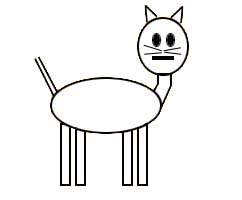
Critter's name: B |
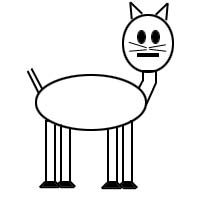
Critter's name: C | 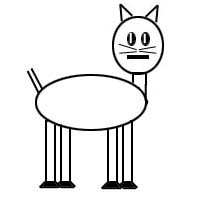
Critter's name: D |
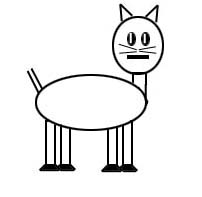
Critter's name: E | 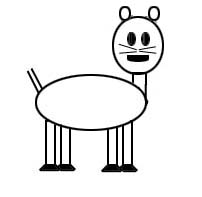
Critter's name: F |
Note: In this example, the Hypothetical Ancestor had "hooves" (what I'm calling the dark appendages at the end of the feet) and a short neck. No other assumptions were made. The data matrix looked like this:
| Critter's Name |
Character:
Eyes |
Character:
Feet |
Character:
Ears |
Character:
Tail |
Character:
Neck |
Character:
Mouth |
Character:
Legs |
Character:
|
| A | Clear | Not hooved | Pointed | Long | Long | Thin | Long | |
| B | Black | Not hooved | Pointed | Long | Long | Thick | Long | |
| C | Black | Hooved | Pointed | Short | Long | Thick | Long | |
| D | Slitted | Hooved | Pointed | Short | Short | Thick | Long | |
| E | Slitted | Hooved | Pointed | Short | Short | Thick | Short | |
| F | Black | Hooved | Rounded | Short | Short | Rounded | Short | |
| Ancestor | ? | Hooved | ? | ? | Short | ? | ? | |
There are several ways to figure out the cladogram from this. One approach was to take all the critters with long necks and group them together at the top of the cladogram, leaving all the critters with short necks grouped at the bottom of the cladogram:
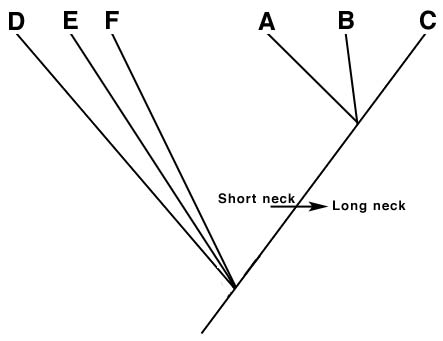
Then the top part of the diagram could be worked out:
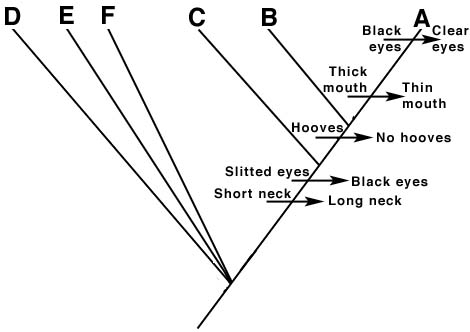
And, finally, the bottom portion:
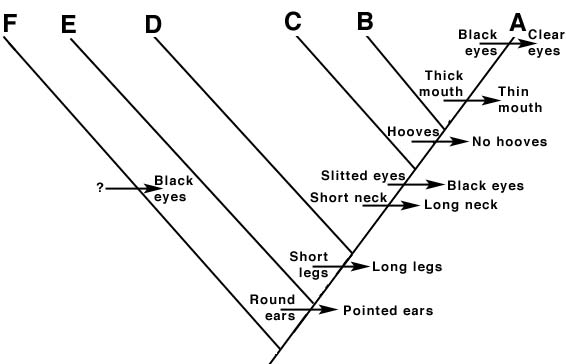
Critter F's black eyes are problematic. Did this species evolve them separately? Is it the ancestral state, with Critter A-B-C's black eyes being a reversal to that state? Since it is impossible to tell from the data, this is the researcher's call. This cladogram shows black eyes evolving from an unknown ancestral condition for Critter F's species only; if it is the ancestral condition, then the eyes for this cluster of species went from black-->slitted-->back to black.














